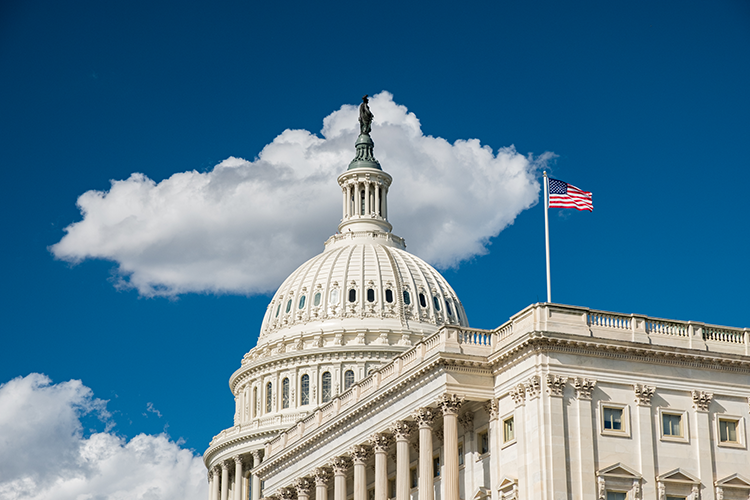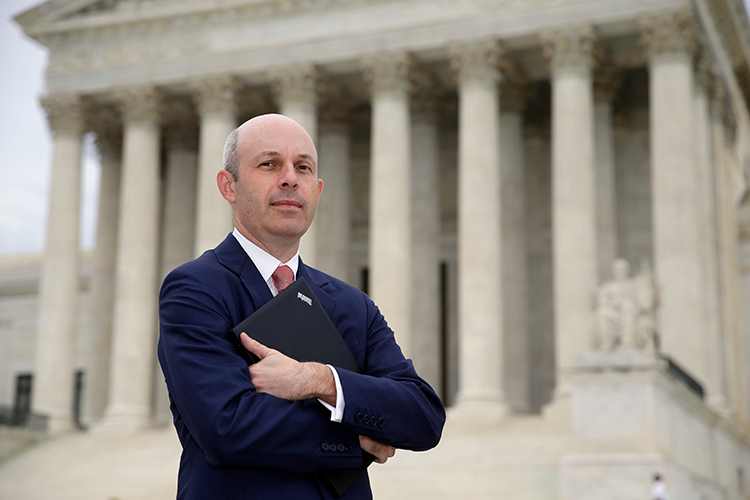Landmark Chevron decision was overturned; what happens now?

A landmark ruling in favor of fisherman overturned Chevron deference and introduced vulnerability into the power of federal agencies—but attorneys are conflicted about the significance of the outcome. (Photo by Robert F. Bukaty/The Associated Press; adjacent image from Shutterstock)
A landmark ruling overturning Chevron deference has introduced vulnerability into the power of federal agencies—but attorneys are conflicted about the significance of the outcome, which they say may be much ado about nothing.
In late June, the U.S. Supreme Court overruled its 1984 decision in Chevron USA v. National Resources Defense Council, which had required courts to rely on federal agencies for guidance when interpreting ambiguous laws and policies. Instead, the court, in Loper Bright Enterprises v. Raimondo, ruled that Chevron “defies the command” of the Administrative Procedure Act, requiring that “the reviewing court” rule on issues of fact and questions of law relating to agencies.
The Chevron deference had recognized that federal agencies, with their specialized expertise, are often better equipped to interpret complex and technical issues than federal judges. This principle guided decisions across a wide range of areas, including the 1938 Fair Labor Standards Act to the 2010 Affordable Care Act, influencing sectors from health care insurance to environmental regulation.
The now-defunct doctrine, however, had not been utilized widely in recent years. One of the last cases affirming the Chevron doctrine was 11 years ago in City of Arlington v. FCC, relating to the Federal Communications Commission’s interpretation of the 1996 Telecommunications Act amendments to the Federal Communications Act, says Will Dodge, managing partner and CEO of Downs Rachlin Martin in Burlington, Vermont.
This changed following a recent fishing lawsuit. In Loper, fishing companies challenged the enforcement of fishing limits set by the National Marine Fisheries Service, which falls under the National Oceanic and Atmospheric Administration. The plaintiffs argued that the costs associated with government-required monitors on commercial fishing boats were unfairly burdensome. The core issue: the interpretation of who should bear these monitoring costs.
The Supreme Court ruled in favor of the fishermen, deciding that courts shouldn’t defer to an agency’s interpretation and should instead exercise independent judgment.
 Related article from ABAJournal.com: Bill would restore Chevron deference doctrine, create advocate to help citizens participate
Related article from ABAJournal.com: Bill would restore Chevron deference doctrine, create advocate to help citizens participate
Be aggressive
The Supreme Court ruling could lead to increased uncertainty and legal challenges, particularly as future presidential administrations might influence judicial interpretations of the laws, attorneys interviewed by the ABA Journal report.
“Before Loper Bright, we would have advised our clients on TCA terms such as ‘reasonable period of time’ and ‘effective prohibition’ based upon the declaratory rulings and associated rules promulgated by the FCC after extensive rulemaking proceedings, all informed by stakeholder input,” Dodge says. “Now, we have to consider the risk that a court may afford no deference whatsoever to the FCC’s interpretations.”
Kevin King, co-chair of Covington & Burling’s government litigation practice group, suggests that this shift could impact the judicial nomination and confirmation process.
“This principle effectively allows presidential administrations to prevent deference to competing views held by the other party, simply by adopting a different interpretation than the other party,” King says. “On hot-button issues, that dynamic may lead agencies to stake out aggressive statutory interpretations, if for no other reason than to undermine the other party’s ability to adopt a different approach in the future.”
The bottom line, Dodge says, is that the ability of providers to make critical infrastructure improvements all across the country will be affected, and likely, there will be increased costs for all involved by driving disputes into the courts due to uncertainty.
More or less consistency?
But Jeffrey Holmstead, a climate change lawyer at Bracewell who previously worked at the Environmental Protection Agency, notes that while the end of the Chevron deference might constrain some regulatory ambitions, it could also lead to clearer legislative intent and more consistent application of laws.
He says, in the long term, it will constrain the ambitions of some regulatory industries. “It will mean that the EPA will have to be more circumspect, and live within the bounds that Congress intended, which will make a difference over time,” Holmstead says.
Some attorneys are optimistic that going forward, the litigation playing field between regulators and the regulated has been leveled. For the last 40 years, says James Tysse, a Supreme Court and appellate partner with Akin Gump Strauss Hauer & Field, agencies had the primary power of interpreting statutes that were less than crystal clear. But after Loper Bright, he says, courts now have the responsibility to determine what interpretation is best.
“For clients on the fence about filing suit, we are telling them that their likelihood of success has just increased,” Tysse says.
They can even challenge older regulations, including potentially previously affirmed as reasonable cases under Chevron, he adds.
King advises his clients to actively participate in agency rulemaking processes by submitting detailed comments on statutory interpretations and to intervene in court cases to support or challenge agency views. The decision leaves room for a weaker form of judicial review known as Skidmore deference, a rule emanating from the Supreme Court’s 1944 decision in Skidmore v. Swift in which federal courts can decide for themselves how much deference to offer to an administrative agency’s interpretations.
“If there is a better interpretation available than the one the agency has adopted, clients have a strong interest in getting the better reading on the table,” he says. “We are also advising clients who support an agency’s approach, to join court proceedings as intervenors, allowing them to supplement the agency’s views on the best interpretation of the statute.”
The removal of Chevron deference may bring clarity to regulatory interpretation, but it could also lead to increased litigation and inconsistent enforcement practices. Some believe this change will weaken federal agencies concerned, but Holmstead suggests that the reality is more complex. His firm’s analysis for a number of clients showed that depending on the case, Chevron either bolstered their arguments or presented a disadvantage.
“There are many regulatory issues that aren’t based on a controversial interpretation, and that’s the only time Chevron applied,” he notes. “There have been many regulatory issues when that’s not in play.”
See also:
Supreme Court could limit agency power after agreeing to reconsider Chevron deference
Supreme Court will consider overruling landmark Chevron deference decision in a fishy case



